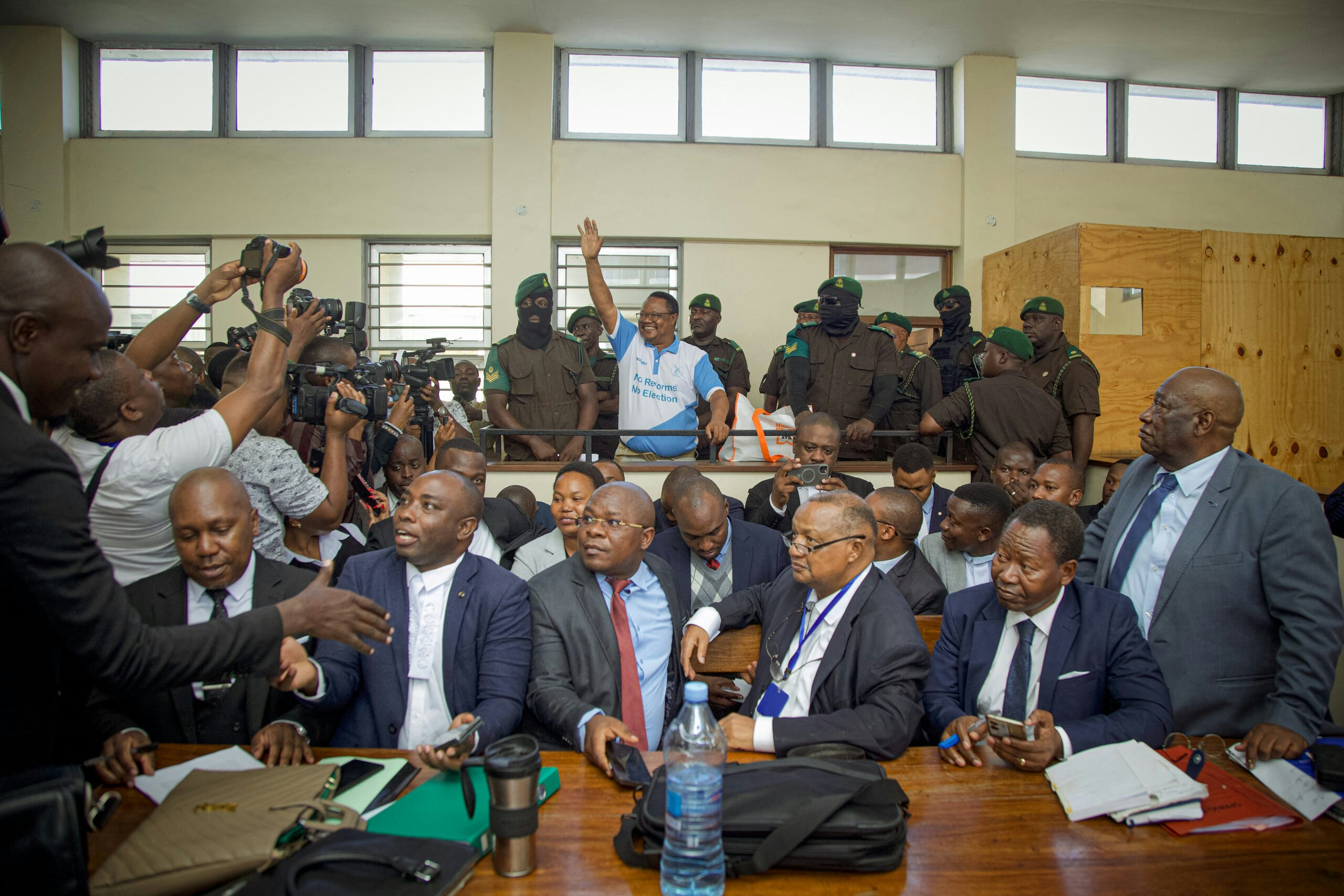America’s diplomats and foreign aid are central to our fight against major adversaries, namely China and Russia, which are actively expanding their aggressive global posture and increasingly challenging American leadership around the world.
That makes it an inauspicious time to propose major cuts to some of our most effective tools in countering this threat. But the Trump Administration is weighing slashing the U.S. diplomatic and foreign assistance budget to $28.4 billion for 2026 from $54.4 billion in the enacted fiscal 2025 budget, according to recent reports.
Diplomacy and foreign assistance are among the most effective, cost-efficient, and nimble tools the United States has available in its battle against these global powers. Significant cuts to the State Department and what remains of the U.S. Agency for International Development (USAID) risk undermining American efforts to project American power, build enduring alliances, and lead in a way what will ensure American strength, security and prosperity.
Addressing the challenge from China and Russia globally needs to be done not only through our military and intelligence efforts but also through soft power, economic engagement to expand our business presence globally, and assertive diplomatic work to advance American interests. Historically the foreign aid budget has been only 1% of the overall budget, with significant return on investment. It, of course, should be regularly reviewed and improved – but not gutted.
If the United States downsizes its diplomatic footprint and diminishes its use of soft power, this vacuum will be – or, better said, continue to be – filled by China and Russia, at the expense of American interests.
The U.S. Congress, through its power of the purse, has a primary role to play in ensuring that American diplomatic and foreign assistance efforts continue by exercising the crucial power it has as an equal branch of government to the executive. This process is important not only to set spending levels and core priorities but also to ask the administration the hard questions about what it wants to do with the money. That ensures there is rigorous oversight and effective expenditure of American tax dollars.
Peace through strength involves not just a strong military but also a robust diplomatic capability and the global use of soft power – our ability to get what we want through attraction and persuasion, not coercion or force. Retired Marine Gen. James Mattis, the former U.S. Central Commander and Secretary of Defense, once said, “If you don’t fully fund the State Department, then I need to buy more ammunition.”
Diplomats are our front line of defense, representing the United States throughout the world. Through their knowledge of other nations and deep relationships globally, they advocate for allies to take actions that support American interests, as well as provide invaluable analysis to leaders in Washington. For many American businesses, U.S. diplomatic missions, including trade missions, are invaluable guides to entering and expanding in foreign markets.
For transnational issues that are serious threats to the United States – from global pandemics to terrorism to attacks on our friends and allies – our embassies are the eyes and ears – and hands and feet – on the ground. Likewise, the United States’ ability to project soft power depends on the direct contacts and relationships that our diplomats build and the goodwill our foreign assistance promotes.
Support for key alliances like NATO and democracy programs may also be on the chopping block at a time when Russia has invaded Ukraine, a democracy in the middle of Europe. The United States needs to be a bulwark for freedom around the world, not because we engage in charity projects, but because we have a strategic and moral imperative to stand with those who fight for the freedoms the United States is built on. And the more those freedoms flourish globally, the safer, more secure, and more prosperous Americans are.
Russia’s brutal war in Ukraine highlights the dire need for NATO (arguably the most successful defensive military alliance in history), the fragility of democracies, and the unrelenting aggression of autocrats. While the president should ask European allies to spend more on national and collective defense and to seek alignment and rigor on our foreign assistance, this shouldn’t mean zeroing out our support for such initiatives that are core to American interests.
Both China and Russia have been aggressively expanding their influence and reach throughout Africa, Asia, Europe, and Latin America. Some of this has been through peaceful, diplomatic and economic channels. For example, in 2011, the United States had a dominant lead over China in diplomatic missions. Today, China leads the United States, with some 274 embassies and consulates compared to the United States’ 271 posts, according to data from the Lowy Institute’s Global Diplomacy Index.
While some consolidation of U.S. posts may be overdue, the administration’s plans to cut almost 30 of those missions would push the United States further behind, including in Europe, where the United States was leading China, and in Africa, where Chinese investment in infrastructure is rapidly deepening Chinese control and alliances.
Chinese missions have been aggressively advancing an economic investment agenda which seeks to give China even greater economic and military power. To give just one example, China has 129 port projects globally, according to the Council on Foreign Relations, giving it significant influence over supply chains and even use for naval purposes.
Beyond their economic and diplomatic outreach, China and Russia are engaged in more aggressive and subversive influence efforts through transnational repression, cyberattacks, and elite capture, often coordinated through their diplomatic missions. What is clear is that both nations have very clear designs to extend their power around the world and replace the United States as a global leader. Radical cuts and U.S. withdrawal are not the way to stay ahead of the strategic competition with them.
At this critical time, the United States needs a clear plan, robust tools, and strong leadership to respond to the threat posed by China and Russia. Congress has a crucial role to play in ensuring our nation is ready for this battle.































